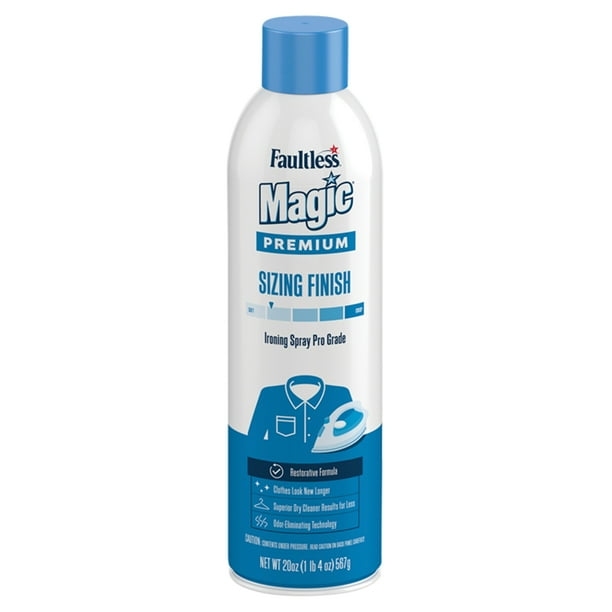Re: Discussion of tuba sizing
Posted: Mon Jan 17, 2022 5:46 pm
The Martin Mammoth has a measured bore ranging from .710-.720 inches (18-18.3mm), SFAIK.
Tuba & euphonium forum, message board, and community.
https://tubaforum.net/
The Martin Mammoth has a measured bore ranging from .710-.720 inches (18-18.3mm), SFAIK.
So there's no difference between a Yamaha YBB-103 and a Holton 345 size wise? If so, how would you explain it in professional terms other "smaller tuba" and "Bigger tuba" to someone wanting to buy one or know the difference? To the point of "less work" downsizing to a 5/4, that's VERY subjective based on how said horn's sound carries and can support the particular group said player is in wanting to downsize. Some 5/4 size horns are more work than a 6/4 but I digress.pjv wrote: ↑Mon Jan 17, 2022 4:03 pmWhatever it means to YOU! And that's the point.
The fractional measurements mean nothing, absolutely nothing.
But everybody uses it anyway. And people buy and sell tubas, often starting off with a "hmm, I think maybe if I downsized from 6/4 to 5/4 I'd be able to do the same work with less effort".
And then they proceed and start looking around for what THEY think is a 5/4 tuba.
It's like looking for a tuba with a sweat sound; it means absolutely nothing.
Except to all the player where it does have...to THEMselves.
And that's the absolute beauty of it. A definition that kind of has a general meaning, though different to everyone who listens, which allows use to vaguely understand each other.
“It was stated…?” Who said that? There are many current Kaiser models that have a 20.5 mm bore. Just because there have been larger-bored instruments in the past doesn’t define the category—the category is more defined by the tall, wide bell that moves earth when needed. The Rudi 6/4 is the only giant like you are describing “currently” available, and if that’s what it takes yo be a Kaiser, the category no longer exists.peterbas wrote:Kaisers being always 5/4 is somewhat misleading because it was stated that the bore should be above like 21 mm .
Too bad most of Uwe site is gone because there was very interesting info about the bore going up to 23 - 24 mm in the days.
And didn't TheBerlinerTuba say that the mouthpieces they played on these giant tubas were much smaller than we nowadays use?
He's likely referring to the Uwe Schneiders of the world who use the fractional system to categorize tubas based SOLELY on bore size. IE: 6/4 St. Petersburg“It was stated…?” Who said that?
Like I said it was on Uwe Schneider's website if I'm not mistaken, he had a lot of historical facts about the measurements of kaiser tuba's.Rick Denney wrote: ↑Mon Jan 17, 2022 6:52 pm“It was stated…?” Who said that? There are many current Kaiser models that have a 20.5 mm bore. Just because there have been larger-bored instruments in the past doesn’t define the category—the category is more defined by the tall, wide bell that moves earth when needed. The Rudi 6/4 is the only giant like you are describing “currently” available, and if that’s what it takes yo be a Kaiser, the category no longer exists.peterbas wrote:Kaisers being always 5/4 is somewhat misleading because it was stated that the bore should be above like 21 mm .
Too bad most of Uwe site is gone because there was very interesting info about the bore going up to 23 - 24 mm in the days.
And didn't TheBerlinerTuba say that the mouthpieces they played on these giant tubas were much smaller than we nowadays use?
For the same reason, a Martin Mammoth was a BAT by any measure, despite a smaller bore.
I think it makes a lot of sense to categorize them by usual application. Nobody is going to think a Cerveny Piggy or a new King 2341 is the optimal earth-mover contrabass for Wagner or Prokofiev, and anyone using a Hirsbrunner Kaiser HBS193 or Holton 345 in a quintet is going feel limited to only a fraction of what it can do (ask me how I know).
Sure, tubas can work fine outside their category, but not optimally.
Joe has it right that precision is unattainable, and not even helpful. Wide descriptions are less precise and more accurate.
Rick “who has played a Rudi 6/4” Denney
It was not based only on the bore size, see old post where you can see Cerveny used 3 points where to measure the width to classify the size of a kaiser tuba.KingTuba1241X wrote: ↑Mon Jan 17, 2022 7:23 pmHe's likely referring to the Uwe Schneiders of the world who use the fractional system to categorize tubas based SOLELY on bore size. IE: 6/4 St. Petersburg“It was stated…?” Who said that?
peterbas wrote: ↑Tue Jan 19, 2021 10:17 amLike I said in short, you must measure on the same spot not take the first tennon because it differs a lot.bloke wrote: ↑Mon Jan 18, 2021 8:29 pm When a tuba is built 7 - 9 inches taller than another tuba (as the CSO York-style key-of-C lap sousaphones are often not much taller than three feet tall...37" tall seems common), the equivalent place in the expansion of the bugle of the taller one (compared to the shorter one) is necessarily going to occur (rather than "up top") around the area where the taller tuba's bottom bow ends...so the taller tuba's upper bow is going to necessarily be smaller diameter than the squatty CSO-style lap sousaphone's upper bow...though the taller one (where both straight bugles and laid out side-by-side) might be easily seen to sport just about as much overall bugle interior volume as the stubbier one.
Additionally, I doubt that an inch or two of bell pancake is going to add much interior volume (cubic inches/cubic centimeters/what-have-you) to a tuba.
This Hirsbrunner kaiser B-tuba is 44 inches tall with a 19" bell and am 807" valveset bore , and
this Miraphone kaiser B-tuba is about 45-1/2 inches tall, with a 17-3/8" bell diameter and a .835" valveset bore
again: if you look towards the small ends of the bottom bows of these very tall tubas, that's roughly the same place (in the overall bugle taper) where the apex of the top bow occurs in the key-of-C lap-sousaphones.
These kaiser B-tubas (to me) resemble huge "blown out" Miraphone 186 or Meinl-Weston 20 tubas, whereas the CSO York-style key-of-C lap sousaphones (to me) more resemble huge "blown out" and "cut-to-C" King 2341 tubas.
SUMMARIZING: It's a mistake to compare the upper bow of a tall kaiser B-tuba to the upper bow of a CSO key-of-C York-style lap sousaphone, notice that the lap sousaphone's upper bow is fatter, and - from that - determine that the entire instrument is fatter, because to do so is to look at two DIFFERENT percentage locations of the overall length in the tapers of those two instruments.
...but why is it that this entire thread continues to remind me of the works of Lewis Carroll...??
bloke "Drink me."
Taking the distances from the patent of Cerveny I measured my 191.
bell kaiser 191 existing oldtuba
247 220 180 178
1250 115 83 87
2000 77 60 57
So the 191 is just the size of an old tuba described in the patent.
I've also tried calculating the volume using a conical shape.
Kaiser tuning slide 23mm vs 21
Total length 530 cm minus 80 cm for distance from tunning slide to mouthpiece = 425.3 cm. The bell volume is estimated by a conical shape from the last 24.7 cm to the same size bell of 48 cm.
Kaiser = 60 + 24.9 = 84.9 liters
191 = 41 + 22.6 = 63.6 liters
Say the 191 is a 4/4 then the kaiser is 5.32/4 in volume.
A true 6/4 would need 95.5 liters.
Make the 191 a CC tuba the volume drops to 51.6 liters.
A CC kaiser would then be 68.6 liters.
A true 6/4 needs then 77,4 liters
These are estimated figures!
What would you call an F French horn (besides being cylindrical)?bloke wrote: ↑Mon Jan 17, 2022 9:21 am The first time I ever saw an attempt the apply the bowed string instrument sizing system to tubas, I laughed.
One of the fun things about tubas is that there are so many configurations, sizes, and combinations of features. This stuff defines that there can be no system which describes their “size“ accurately, so why can’t we describe their size inaccurately, in order to be more accurate ?
- really small
- small
- medium
- big
- really big
- huge
…??
‘ still six (now: word-based) modifiers, but they are more vague - and more appropriate for instruments which vary so much…also discouraging those who would attempt (and fail - as always) to scientize this from attempting to do so.
I would just argue the St. Pete issue being a 6/4. I won't dispute him on other stats, but he's wrong on that one.It was not based only on the bore size,
Fun fact -- the Rudy 5/4 and 6/4 BBb both have the same 22 mm (.866") bore.

We're dancing around words.KingTuba1241X wrote: ↑Mon Jan 17, 2022 6:08 pm So there's no difference between a Yamaha YBB-103 and a Holton 345 size wise? If so, how would you explain it in professional terms other "smaller tuba" and "Bigger tuba" to someone wanting to buy one or know the difference? To the point of "less work" downsizing to a 5/4, that's VERY subjective based on how said horn's sound carries and can support the particular group said player is in wanting to downsize. Some 5/4 size horns are more work than a 6/4 but I digress.
"Whatever it means to you"....imagine if anyone selling anything ever had a customer ask them something specific about their product and they gave them this answer? I don't think you'd sell many of them.
With that said, I still think we can find and come up with a universal system of classing tuba sizes, and ONLY size (not tuning or sound). If fractions are too complicated for some Right Brained individuals in the group (I get it) perhaps a simpler system of "Small, Medium, Large and Extra Large" could take the place of each of those fractions.Very general. Lots of grey areas. Like describing the taste of wine.
You know what it means to you. Go with that and you're at least pointed in the right direction.
Now, imagine if we had a system to determine how well tuning is.
Grade A tubas. Or Grade F.
Imagine how much fun we'd have discussing those!
